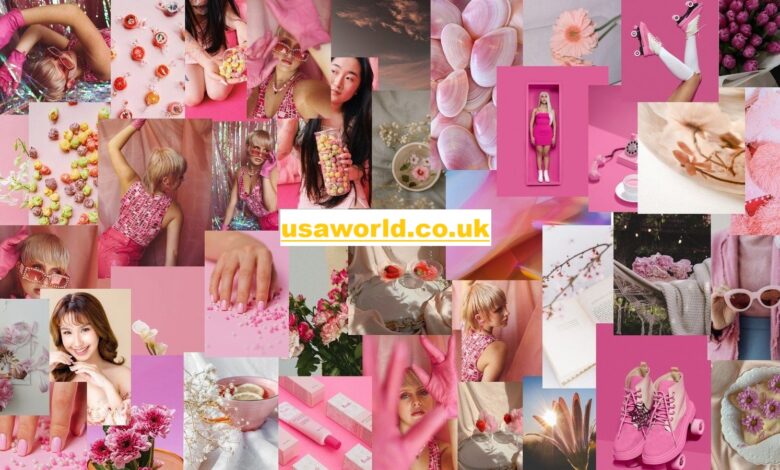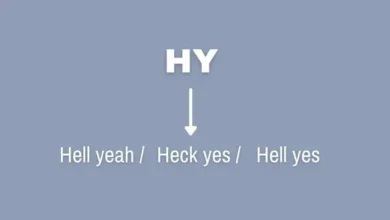Aesthetic: The Essence of and Beyond Beauty, Into Meaning

Introduction: What Does “Aesthetic” Really Mean?
The word “aesthetic” is one of those fascinating terms that feels both familiar and mysterious at the same time. You hear it often in conversations about art, design, fashion, or even in everyday social media captions, yet its depth goes far beyond its casual use. At its root, “aesthetic” refers to the appreciation of beauty or good taste, but the concept is layered with history, philosophy, and personal perception. To talk is to enter a space where logic meets emotion, where form and function intersect, and where humans attempt to articulate why certain things simply feel beautiful.
The beauty of the word lies in its elasticity. For some, aesthetic is about visuals—colors, shapes, and patterns that create harmony. For others, it is a lifestyle, a curated approach to how one chooses to dress, decorate, or present themselves to the world. But the truth is, “aesthetic” is not limited to what we see; it stretches into what we feel, how we interpret, and even how we live , is an experience as much as it is an idea.
When we peel back the layers of the term, we uncover not only the philosophy of beauty but also the psychology of perception. Why do humans find certain things beautiful and others not? Why do trends in aesthetics shift over time, yet always circle back to timeless forms of elegance? By exploring these questions, we begin to realize that is not just an accessory to life—it is woven into the very fabric of human existence.
This article will take a journey into the many dimensions of “aesthetic”: its philosophical origins, its cultural significance, its impact on modern life, and how we can cultivate our own personal ,in meaningful ways. The goal is not only to understand what aesthetic means but also to explore how it enriches the way we think, create, and connect.
The Philosophy of Aesthetic: Beauty as an Idea

The origins of the term “aesthetic” can be traced back to the 18th century when philosophers like Alexander Baumgarten and Immanuel Kant attempted to define beauty as more than just visual appeal. Baumgarten coined the term aesthetica to describe the science of sensory knowledge—suggesting that beauty was not just about what we see but about how we perceive through all our senses. For him, aesthetics was about understanding the harmony between the mind and the external world.
Immanuel Kant, meanwhile, brought, into a moral and intellectual realm. He argued that beauty is not simply what pleases the senses but what stirs a kind of universal feeling of harmony between imagination and understanding. When we look at a painting, listen to a symphony, or watch a sunset, the feeling of beauty is not random—it comes from our minds recognizing a kind of order, balance, or purpose that resonates with us. This perspective elevated from being a shallow pursuit of pretty things to being a deep, human experience connected to meaning.
Other philosophers like Hegel and Nietzsche continued the conversation, each adding their layers of interpretation. Hegel saw aesthetics as a way to access absolute truth, believing that art was the highest form of spirit revealing itself. Nietzsche, on the other hand, saw aesthetics as an essential force of life, a way to embrace chaos and find meaning in a seemingly indifferent world. To him, life itself needed to be approached as an aesthetic project—crafted, lived, and celebrated with artistic intensity.
What emerges from these philosophical debates is the idea that aesthetic is not confined to beauty as ornamentation. It is a lens through which we interpret reality. To speak of is to speak of human consciousness itself—the way we find, assign, and even create meaning in the patterns around us. Beauty becomes less about perfection and more about resonance, connection, and transformation.
Aesthetic in Culture: The Collective Sense of Beauty
While philosophy explores aesthetic as a universal concept, culture shapes it in ways that make it feel both personal and collective. Every society, era, and community has its own understanding of beauty, its own symbols of elegance, and its own way of curating the world into something meaningful. From the ornate designs of Baroque art to the minimalist lines of Japanese Zen gardens, culture acts as a stage where are performed and redefined.
Take, for example, the Victorian era, where aesthetic sensibilities were tied to grandeur, ornamentation, and layers of detail. Contrast this with the Bauhaus movement of the early 20th century, where simplicity, geometry, and function became the aesthetic language of progress. These shifts show that aesthetics are never static; they evolve with history, technology, and social values.
Today, aesthetics have become democratized through digital culture. Social media platforms like Instagram, TikTok, and Pinterest are not just places for self-expression but are essentially marketplaces. Trends like “cottagecore,” “dark academia,” or “minimalist chic” show how identities are being constructed, shared, and reimagined in real time. In these spaces, aesthetic becomes a cultural dialogue, a way for individuals to find belonging while also asserting uniqueness.
Yet culture also reminds us of the diversity of aesthetics. What one group finds beautiful, another may find ordinary or even unattractive. For instance, while pale skin was historically prized in Europe as a marker of nobility, many cultures today celebrate darker skin tones as a symbol of health, vitality, and natural beauty. This fluidity highlights that are not absolute—they are mirrors reflecting the values, aspirations, and struggles of a particular community.
The Psychology of Aesthetic: Why We Find Things Beautiful
If philosophy and culture give us the big picture, psychology helps us understand the micro-level of aesthetics: why does the human brain find certain things pleasing? At its core, aesthetics taps into the way we process patterns, symmetry, and harmony. Research in neuroscience has shown that humans are wired to recognize balance and proportion—features that are often associated with beauty.
For example, the “golden ratio,” a mathematical proportion found in nature, architecture, and art, has been celebrated for centuries as an ideal aesthetic form. When we see a face, building, or painting that follows this ratio, our brains respond with heightened pleasure, as if they are recognizing a universal code of beauty. This suggests that is not just cultural but also biological.
But beauty is not only about symmetry and order. Sometimes, what moves us aesthetically is precisely the opposite—an unexpected twist, a burst of color, or an asymmetry that feels dynamic. The Japanese concept of wabi-sabi embodies this: finding beauty in imperfection, transience, and the incomplete. Psychologically, this speaks to our ability to embrace complexity and nuance rather than simply chasing perfection.
There is also an emotional dimension to aesthetics. A particular song, fragrance, or even a handwritten note can stir deep emotions not because they are mathematically balanced but because they resonate with memory, nostalgia, or meaning. This shows that aesthetics is not just about form but about connection—our ability to link beauty with personal experiences and inner worlds.
Aesthetic in Everyday Life: Living Beautifully
The word “aesthetic” might sound lofty, but its influence is woven into the smallest details of daily living. Think about how you arrange your desk, the clothes you choose to wear, or the background you set on your phone. These decisions are not just functional—they are choices that create a sense of harmony, comfort, or identity.
In interior design, for instance, choices determine how a space feels. A room decorated with warm tones, soft lighting, and organic textures creates a different emotional atmosphere than one dominated by sleek lines, monochrome colors, and metallic accents. Neither is better or worse—they simply express different aesthetics that shape the way people experience that environment.
Personal aesthetics also play a role in lifestyle. Some people lean toward a minimalist aesthetic, valuing simplicity, decluttering, and clean lines. Others may embrace maximalism, filling their spaces and wardrobes with colors, textures, and eclectic combinations. These preferences reflect not just taste but also personality, mood, and worldview.
Living aesthetically does not require wealth or luxury. It is about mindfulness—choosing to surround yourself with things, people, and experiences that align with your sense of beauty and meaning, living is as much about how you savor a morning cup of tea as it is about how you decorate your living room. It is about treating life itself as a canvas and making conscious decisions to create harmony in the way you live.
Creating Your Own Aesthetic: A Personal Journey
One of the most empowering aspects of aesthetic is that it is not something you passively consume—it is something you actively shape. Creating your own, is about curating a personal style that reflects who you are and what you value. It is not about following every trend but about discovering patterns that feel authentic to you.
The first step in cultivating, is observation. What kinds of colors, textures, or styles do you naturally gravitate toward? Do you prefer muted tones or bold contrasts? Do you find comfort in symmetry, or are you drawn to asymmetry? Paying attention to your preferences can help you identify the seeds of your personal aesthetic.
The next step is experimentation,is not rigid—it evolves as you grow. You might start with a love for vintage fashion and slowly incorporate modern minimalist pieces. Or you may shift from a rustic home aesthetic to something more contemporary as your lifestyle changes. What matters is not consistency for its own sake but authenticity.
Finally, the ultimate aesthetic is not just about what you wear or how you decorate—it’s about how you live. Do your choices reflect the values you care about? Do they create harmony between your inner and outer worlds? A truly personal is not about impressing others but about crafting a life that feels beautiful, meaningful, and true to yourself.
Conclusion: Aesthetic as a Way of Being
The word “aesthetic” may sound like it belongs in galleries or fashion magazines, but in truth, it belongs everywhere—because beauty belongs everywhere. From philosophy to culture, from psychology to lifestyle, is the thread that weaves together perception, meaning, and expression. It is not simply about what looks good; it is about what feels resonant, harmonious, and alive.
To embrace aesthetic is to embrace the art of living. It is to recognize that beauty is not a luxury but a necessity—a force that shapes our well-being, connects us to others, and gives depth to our existence. Whether in the symmetry of a cathedral, the imperfection of a handmade bowl, or the quiet pleasure of a sunset, it teaches us to pause, perceive, and appreciate.
In the end, aesthetic is not just about creating beauty—it is about becoming beauty. It is about allowing life to be not only lived but also designed, not only endured but also celebrated. In this way, becomes less a trend or a category and more a philosophy of being—a reminder that every moment holds the potential to be beautiful, if only we learn how to see it.
Further insights and Gain more perspective from…
Augusta Precious Metals Lawsuit



